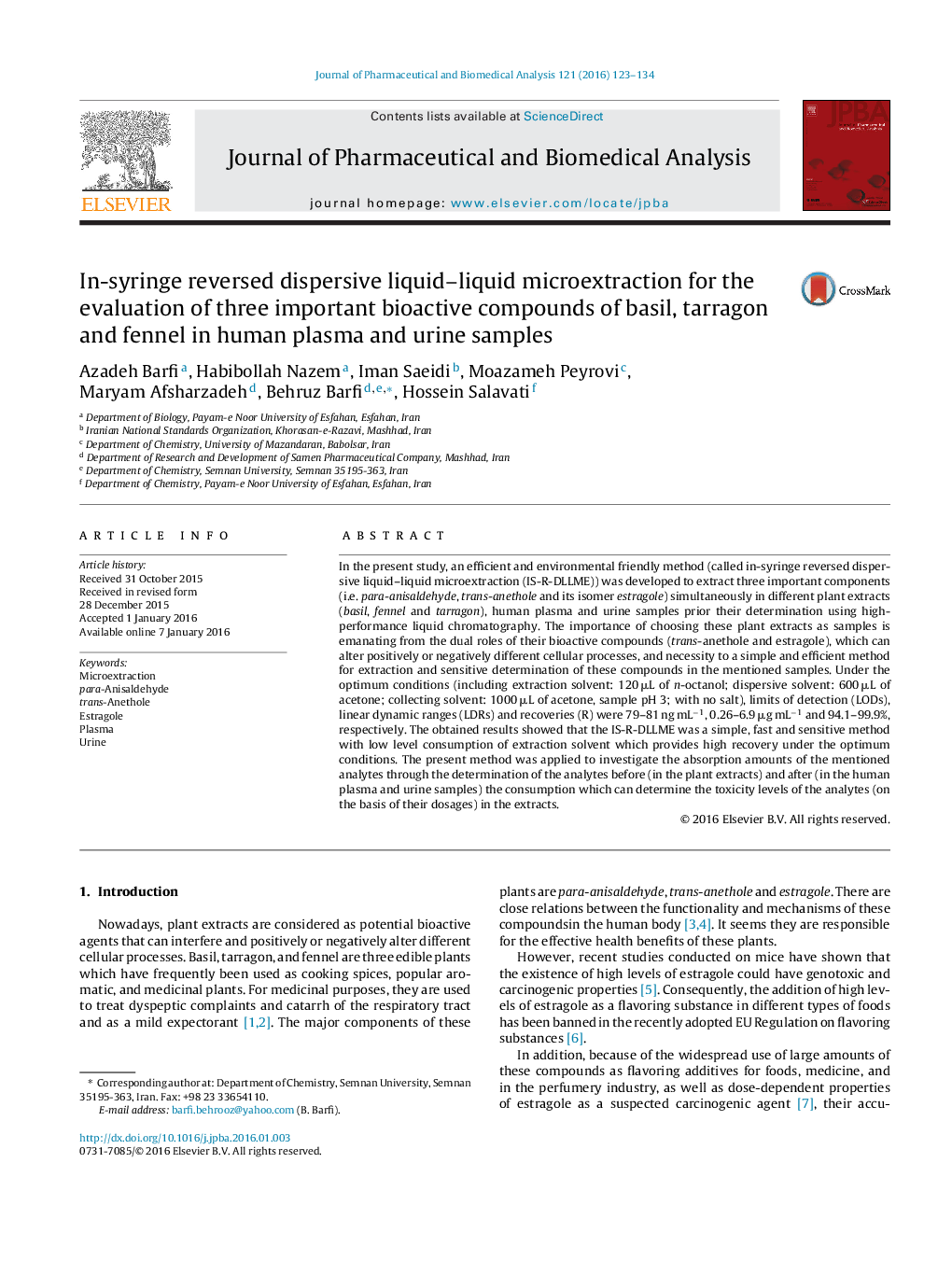| کد مقاله | کد نشریه | سال انتشار | مقاله انگلیسی | نسخه تمام متن |
|---|---|---|---|---|
| 1220953 | 1494614 | 2016 | 12 صفحه PDF | دانلود رایگان |
• IS-R-DLLME was developed to simultaneously extract three bioactive compounds.
• IS-R-DLLME is a sensitive method for analysis of complex biological matrices.
• Levels of the analytes showed that extracts have no carcinogenic effect on human.
In the present study, an efficient and environmental friendly method (called in-syringe reversed dispersive liquid–liquid microextraction (IS-R-DLLME)) was developed to extract three important components (i.e. para-anisaldehyde, trans-anethole and its isomer estragole) simultaneously in different plant extracts (basil, fennel and tarragon), human plasma and urine samples prior their determination using high-performance liquid chromatography. The importance of choosing these plant extracts as samples is emanating from the dual roles of their bioactive compounds (trans-anethole and estragole), which can alter positively or negatively different cellular processes, and necessity to a simple and efficient method for extraction and sensitive determination of these compounds in the mentioned samples. Under the optimum conditions (including extraction solvent: 120 μL of n-octanol; dispersive solvent: 600 μL of acetone; collecting solvent: 1000 μL of acetone, sample pH 3; with no salt), limits of detection (LODs), linear dynamic ranges (LDRs) and recoveries (R) were 79–81 ng mL−1, 0.26–6.9 μg mL−1 and 94.1–99.9%, respectively. The obtained results showed that the IS-R-DLLME was a simple, fast and sensitive method with low level consumption of extraction solvent which provides high recovery under the optimum conditions. The present method was applied to investigate the absorption amounts of the mentioned analytes through the determination of the analytes before (in the plant extracts) and after (in the human plasma and urine samples) the consumption which can determine the toxicity levels of the analytes (on the basis of their dosages) in the extracts.
Figure optionsDownload as PowerPoint slide
Journal: Journal of Pharmaceutical and Biomedical Analysis - Volume 121, 20 March 2016, Pages 123–134
